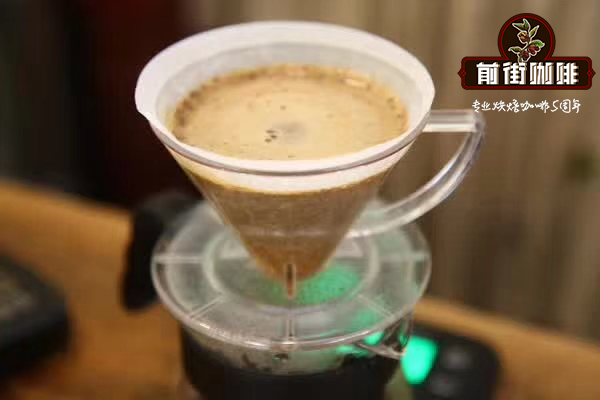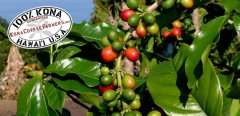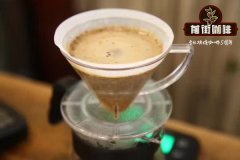The Source treatment of Father Rose Summer in Costa Rica
Costa Rica Padre Ronald Geisha
Costa Rican priest rose summer
Country: Costa Rica
Producing area: Tarazhu
Variety: Rose summer
Altitude: 1600-1650m
Treatment: washing treatment
Grade: SHB
| | Costa Rica Costa Rica |
Costa Rica has eight major coffee producing areas, namely, the Western Valley West Valley, the Central Valley Central Valley, Tarazu Tarrazu, Sanhe Tres Rios, Eurosci Orosi, Brenka Brunca, Duli Alba Turrialba, Guanacaster Guanacaste. Tarrazu is one of the main coffee producers here.
Tarazhu is located in the fertile volcanic region of Central America, which has a humid climate and fertile volcanic soil, abundant rainfall throughout the year, high altitude, and dense forest natural shade, providing a unique growth environment for coffee growth. Nearly 95% of the coffee beans produced in Tarazhu Alpine are very hard beans (SHB), which generally grow above 1500 meters above sea level.
Father Padre Ronald.
40 kilometers south of Tarazu San Jose, there is a place called the Saints area, which is 1600-1650 meters above sea level. There are 63 coffee farmers in the Tarraz-Frailes area, each with about 1-2 hectares of coffee plantations, which sell coffee cherries harvested to large companies every year to make a meagre profit.
For the local people who believe in Catholicism, the priest is not only a missionary, but also a more learned and well-connected role in the whole village. Three years ago, the priest decided to use his relationship to rent space with nearby processing plants to help small farmers turn coffee cherries into raw beans and to help find better buyers.
They received a bonus to build a processing plant, which was officially opened on January 28, 2016. now, they have their own processing plant, which can make better quality coffee, help more farmers and make them work hard for a year. Get more feedback.
Treatment method
This bean is washed.
Screening coffee cherries-removing pulp-fermentation-washing-drying-shelling
Put the selected coffee cherry into the peeling machine and initially remove its skin and pulp; put the coffee beans with residual pectin into water and let them ferment for about 24 hours; after fermentation, wash the coffee beans with parchment in a flow tank to remove their pulp and pectin; dry the coffee beans after cleaning or dry them with the help of a dryer to reduce the moisture content to about 12%. Finally, remove the parchment of raw coffee beans.
Hand-made suggestion
Recommended cooking method: hand flushing
Filter cup: V60 or cake cup
Water temperature: 90-92 ℃
Powder / water ratio: 1:15
Degree of grinding: BG 5R (Chinese standard No. 20 screen pass rate 58%), that is, medium fine grinding
Flushing and cooking technique: segmented extraction. Steam with 30 grams of water for 30 seconds, small flow circle injection to 124 grams, continue to inject water to 227 grams when the water level is about to be exposed to the powder bed, remove the filter cup when the water level is about to expose the powder bed, and the extraction time is two minutes.
When boiled in a V60 filter cup, it smells of ginger, with sour notes of lime, citrus, nectarine and sweet orange in the mouth, cream in the middle, brown sugar, cocoa and tea in the aftertaste. The flavor is rich and the flower smell is obvious; when boiled with a cake filter cup, it smells of jasmine and virgin fruit, with sour notes of plum, citrus, apricot and plum, sweet peach and honey, and a mellow taste.

Important Notice :
前街咖啡 FrontStreet Coffee has moved to new addredd:
FrontStreet Coffee Address: 315,Donghua East Road,GuangZhou
Tel:020 38364473
- Prev

Hawaii Kona, one of the most beautiful coffee beans in the world, and extract V60 siphon Philharmonic pressure KONO
Professional Coffee knowledge Exchange more information about coffee beans Please follow the Coffee Workshop (official Wechat account cafe_style). Today's introduction is from Kona, Hawaii, which has a good reputation as one of the most beautiful coffee beans in the world. The popularity of KONA,BIG ISLAND Hawaiian coffee mainly comes from this producing area, which is different from other producing areas of Hawaii.
- Next

Introduction of Raida Manor and Coffee Flavor in Panama
Finca Lerida is a chief engineer from Norway, Mnniche, came to Panama in 1924 to build the canal, after the completion of the canal, lamented the beautiful and diverse natural environment, settled here, and began to grow coffee, named Lelida Manor (Finca Lerida). Mnniche, an engineer himself, found that after the coffee cherries were harvested,
Related
- Detailed explanation of Jadeite planting Land in Panamanian Jadeite Manor introduction to the grading system of Jadeite competitive bidding, Red bid, Green bid and Rose Summer
- Story of Coffee planting in Brenka region of Costa Rica Stonehenge Manor anaerobic heavy honey treatment of flavor mouth
- What's on the barrel of Blue Mountain Coffee beans?
- Can American coffee also pull flowers? How to use hot American style to pull out a good-looking pattern?
- Can you make a cold extract with coffee beans? What is the right proportion for cold-extracted coffee formula?
- Indonesian PWN Gold Mandrine Coffee Origin Features Flavor How to Chong? Mandolin coffee is American.
- A brief introduction to the flavor characteristics of Brazilian yellow bourbon coffee beans
- What is the effect of different water quality on the flavor of cold-extracted coffee? What kind of water is best for brewing coffee?
- Why do you think of Rose Summer whenever you mention Panamanian coffee?
- Introduction to the characteristics of authentic blue mountain coffee bean producing areas? What is the CIB Coffee Authority in Jamaica?

